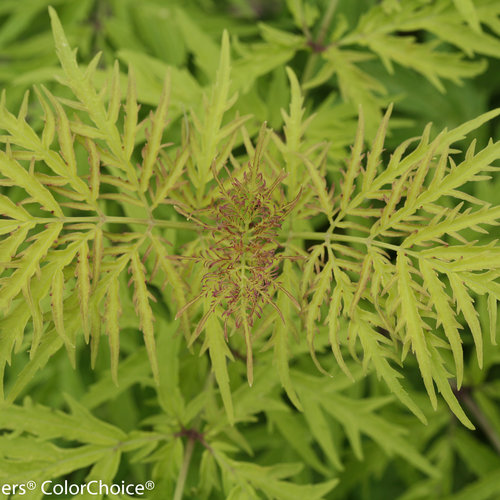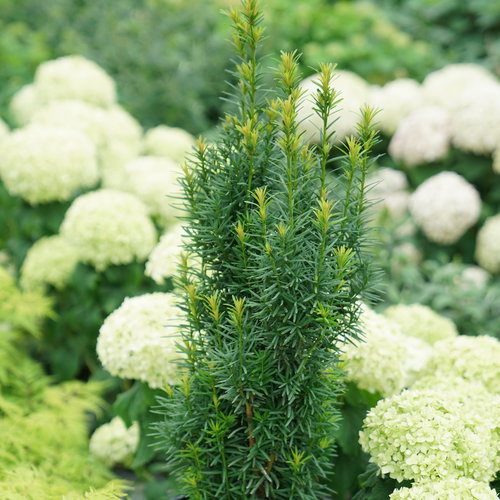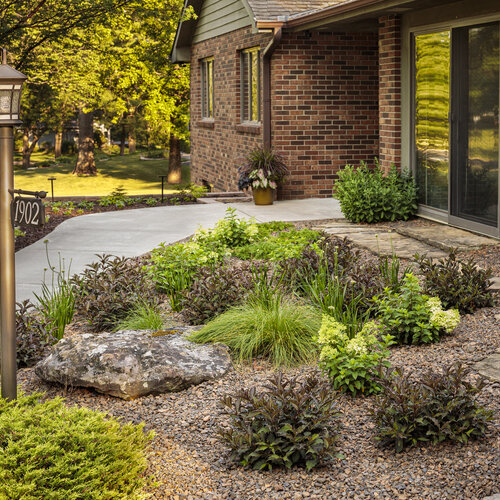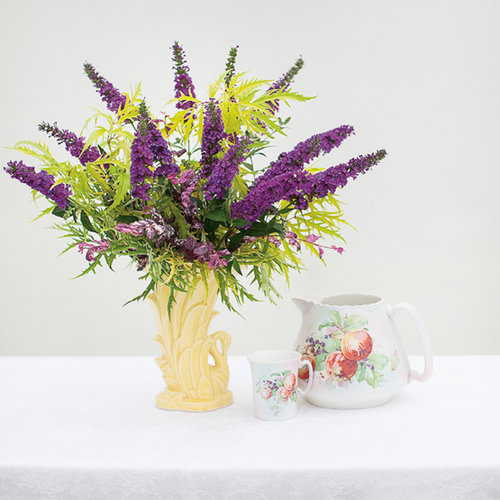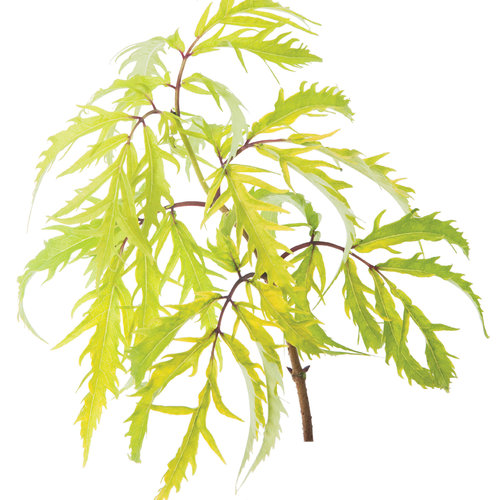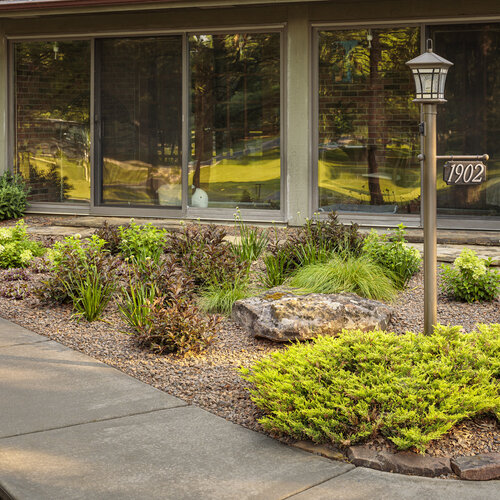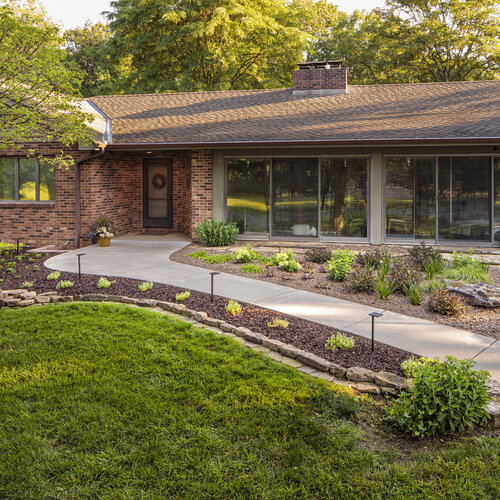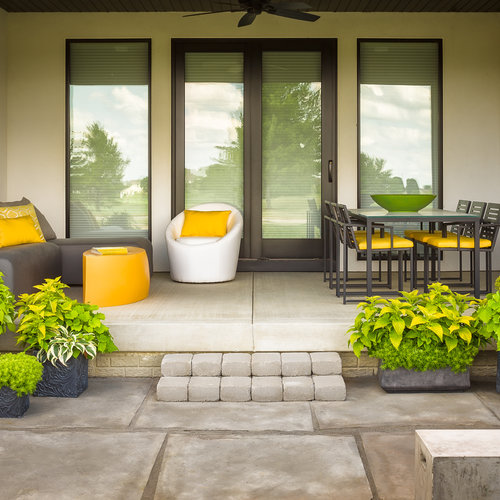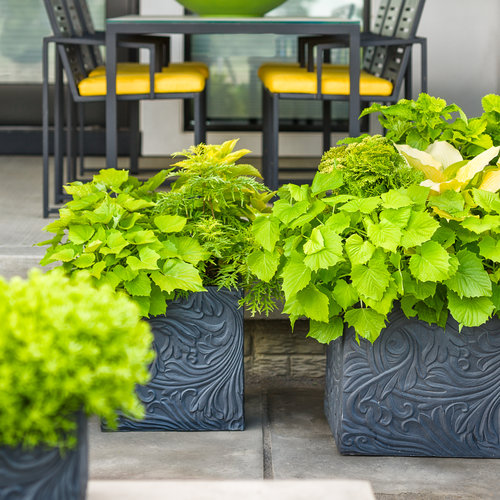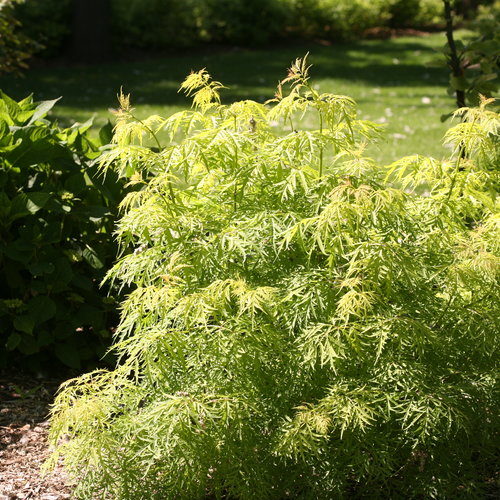The Lemony Lace is definitely susceptible to Verticillium Wilt. I have two 3 year old plants and they were thriving in 6-8 hrs of sun. Truly unique and gorgeous plants. But in June they developed brown patches. Complete limbs turned brown and dead. One is still going after removing a limb. The other looks like the whole plant will die soon. And they are not planted next to each other. Upon reading about this Wilt, I think I will have to remove both. There are many people online with this problem. Plants do not recover. It is so sad. I would not recommend purchasing.
Lemony Lace® Elderberry Sambucus racemosa
- Part Sun to Sun
- Sun
- Summer
- Fall
-
48 - 84 Inches48 - 84 Inches48 - 84 Inches1.2m - 2.1m1.2m - 2.1m1.2m - 2.1m
Features
A bright and stylish plant with an easy-going nature.
Ever wish our popular Black Lace® elderberry came in a sunny bright yellow? We are happy to oblige: Lemony Lace® offers finely dissected foliage but in a cheery gold color to really light up your landscape. This North American native produces big clusters of white flowers in early spring before the foliage emerges, then bright yellow leaves take over, edged in red. As the foliage ages, it turns an attractive chartreuse. Though it is a large plant, it can be pruned to stay smaller if you'd like. A People's Choice Award winner at the 2014 Farwest Horticulture Trade Show, Lemony Lace Sambucus also won a Green Thumb Award from the Direct Gardening Association.
Top reasons to grow Lemony Lace elderberry:
- very colorful from spring through fall
- little to no maintenance required
- showy white flowers in spring
- very deer resistant
Produces BerriesFoliage InterestFall InterestResists:DeerNative to North AmericaCharacteristics
Plant Type:ShrubShrub Type:DeciduousHeight Category:MediumGarden Height:48 - 84 Inches 1.2m - 2.1mSpacing:48 - 84 Inches 1.2m - 2.1mSpread:48 - 84 Inches 1.2m - 2.1mFlower Colors:WhiteFoliage Colors:RedFoliage Colors:YellowFoliage Shade:golden with red new growthHabit:MoundedContainer Role:ThrillerPlant Needs
Light Requirement:Part Sun to SunLight Requirement:SunThe optimum amount of sun or shade each plant needs to thrive: Full Sun (6+ hours), Part Sun (4-6 hours), Full Shade (up to 4 hours).
Maintenance Category:EasyBlooms On:Old WoodBloom Time:Grown for FoliageHardiness Zones:4a, 4b, 5a, 5b, 6a, 6b, 7a, 7bHeat Zones:7Water Category:AverageUses:Border PlantUses:LandscapeUses:Specimen or Focal PointUses Notes:This distinctive golden, thread-like foliage looks wonderful in mixed borders or as a high-impact specimen plant. Plant it with Black Lace sambucus for a really bold statement! The red fall fruit makes it a good addition to wildlife gardens where birds can eat it, but humans cannot. The berries are poisonous.
Maintenance Notes:Benefits from hard pruning as a young plant to develop a nice full habit. Older plants can be trimmed after flowering. This plant blooms on old wood, so spring pruning will reduce flower production. Adaptable to most well-drained soils. Prefers to grow in part sun or afternoon shade in southern gardens.
Lemony Lace® Sambucus racemosa 'SMNSRD4' USPP 26,613, Can 5,719 -
5742342713Browse reviews from people who have grown this plant.
-
Diane, 24 weeks ago
-
I have had 2 of these elderberry plants for about 5 years now. The first year they grew taller than 5 feet and bushy in about 5 hours of sun. The next year i had to move one of them and the other i had to chop significantly. Since then I have been moving them to pots and all over the place and they are stunning and grow amazing every year. I know that when I finally decide to put them in their forever spot they will be happy and grow big. Mine seem to love sun and don't require much fuss. I add tree and shrub spikes during the season changes, and the only fuss i see is that it prefers to grow in the ground. I live in NYC. I just purchased 2 for my mother who loves the color.
Janine, New York, United States, 1 year ago -
While it’s a beautiful plant, mine died within a week of bringing it home from the nursery. It looks like it came with the Elderberry Borer Beetle, which is unfortunate.
Beth Smith, British Columbia, Canada, 2 years ago -
I bought 5 Lemony Lace bushes and this is their third year. Two are growing in full sun and three in partial shade. The ones in full sun seem to grow faster, but the branches on all the bushes are very brittle. They arrived with broken branches and even now the branches will break if you even look at them cross-eyed. Each spring I start over with a very small plant.
Marilyn Battiste, Michigan, United States, 2 years ago -
I purchased this shrub online just few days ago and it arrived to me in a disastrous condition. All buds and freshly emerged foliage were totally wilted. The plant spent 50 hours in delivery, placed in a small cartoon box together with other plants, so my first thought was that the shrub was stressed with shipping conditions and didn't get enough oxygen or water. However all other delivered plants were very fine. So I watered the shrub and placed in a shaded and cool room for two days. Unfortunately it hasn't started to recover, buds are still wilted and now I suspect that it is suffering from verticilium wilt and it was already infected with the disease in the nursery.
Monica, Poland, 2 years ago -
Loved the plant but it got the verticillium wilt and had to be removed and the soil around it removed. Can't plant anything similar in that location now. I suspect it came with the plant when we purchased it. The nursery told us to trim it back in late winter it will be fine. Really suspect it had it when we purchased it.
Waneda, Indiana, United States, 2 years ago -
Not sure what killed it. Zone 5b 6a border, 3rd year of growth on an established plant In a place I consider a prime location on south facing bed, sheltered by house and trellis, sees 6hrs of direct afternoon sun daily, with 4 to 5 hrs partial shade. A mature plant 6ft high 8 ft wide, dropped all leaves late June...dead. It was the third year in this location. Nearby plants such as hibiscus, elephant ears, clematis, coral bells, Japanese maples, dwarf crab are all unaffected and thriving. It sure left an ugly hole, but while it existed it was such a beautiful plant!
Mark, Indiana, United States, 3 years ago -
Elderberry borer beetle can cause the new shoots to wilt and they make holes in the stem of the branches.
J RICE, Ontario, Canada, 4 years ago -
The wilt gardeners are experiencing with this plant is likely verticillium wilt, a soil-borne disease that emerges only in certain years and is very difficult to eradicate unless you are willing to solarize your soil. I lost three cotinus (8') to this a couple of years ago. It is heartbreaking. This is such a beautiful plant. Perhaps planting it as a container plant with sterile soil would help - it is a shame to lose a plant to this disease.
Lisa J, New York, United States, 4 years ago -
I planted lemony lime elderberry three years ago and it is truly lovely. It still needs to balance a bit, but the height is 6' and width is 4.5 feet, so I expect the horizontal expansion to come in the next two years as I can see the growth in that direction. The colors it expresses are maroon, bright yellow, and bright green, with white blossoms. It is one of the most favorite bushes I have used in my gardening experience over the last 25 years. I have a small garden now and it is the star. I do not water unless it is has been dry for more than a week. I am in zone 6 and it is planted at the top of a slight downward grade, which is great for drainage.
Bilva, Michigan, United States, 5 years ago
-



